Our Land: Art is the Story of a People
The history, heritage and culture of the Inuit revealed through art
at an exhibition at the Winnipeg Art Gallery
When I think of Inuit art the first image which comes to mind is a dark grey soapstone carving of a person in a parka, but I know Inuit art is more than that. Stones other than soapstone are used for carving. The art includes paintings, beadwork, prints, soft sculptures and dolls, tapestries and more. Although I most often associate Inuit art with stylistic and simple abstract lines, styles vary widely. And yet it remains recognizable as Inuit art in all its forms and styles. It typically depicts life in the north and the traditional lifestyle, unified by common themes of deep connection with family, natural surroundings and the spiritual world. Recently, I gained an appreciation for how the narrative content of Inuit art reveals a people’s history and heritage to the world.

It was the evening of Nuit Blanche in Winnipeg, Manitoba. Nuit Blanche Winnipeg is an annual dusk-to-dawn free event celebrating contemporary art. The Winnipeg Art Gallery (WAG) was one of the participants in the event, opening its galleries and hosting several parties. I was not there for any of the parties. I wanted to see the Inuit art at the Our Land: Contemporary Art from the Arctic exhibit.
As my friend and I made our way to the elevator, a man inside held the doors open for us. That man turned out to be well versed with Inuit art. He was Fred Ford, chair of the WAG Works of Art Committee and President/Board Chair of the Manitoba Inuit Association. He gave us and a couple of other people a mini guided tour of the exhibit.
Fred told us there is no word for art in the Inuit language. The Inuit have lived in the eastern Canadian Arctic since ancient times and have a long creative history, yet Inuit art is a contemporary art form. The Inuit used their carving, stitching and other creative skills to decorate useful objects. When visitors from the south became interested in the Arctic depictions of Inuit life, starting in the late 1700s, the Inuit began decorating pieces specifically for trade. But it wasn’t until the 1950s that the modern era of Inuit art began.
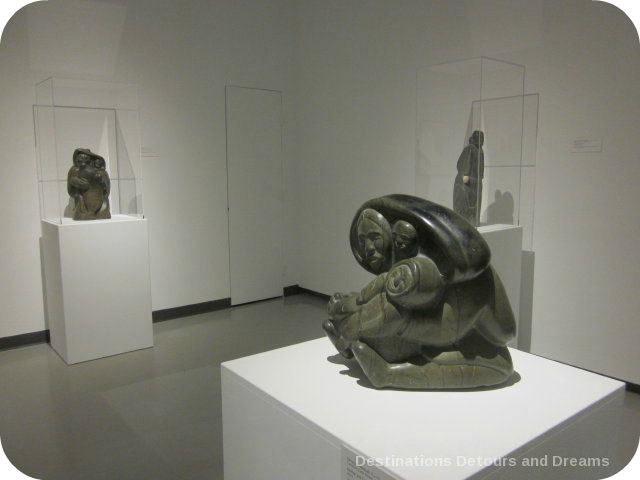
In 1948, James Houston travelled from southern Canada to the Arctic and brought back soapstone carvings. Interest grew after an exhibition in Montreal. The previous two centuries of European contact had brought profound changes to the Inuit way of life. The move away from a nomadic hunting lifestyle into settlements had created economic challenges. Encouraged by the Canadian government, the Inuit turned to art to deal with these challenges.
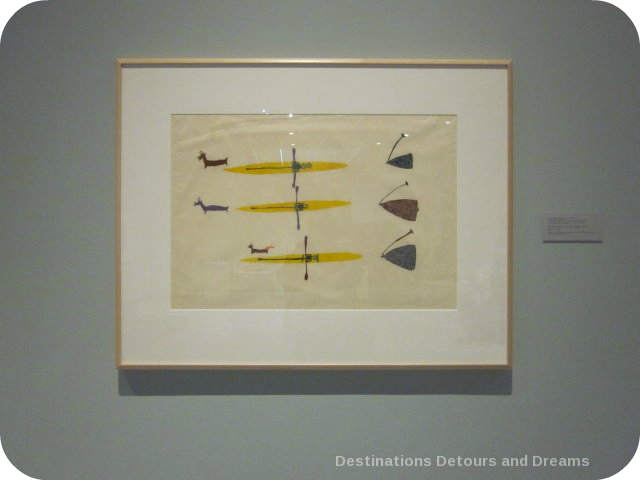
Fred looked at carvings from across the room and identified where they were from, and sometimes the specific artist, by the stone used and the particular style. Carvings were made from different types of stone, bone and antlers. Fred told us the story depicted in the The Men Hunting Caribou in Kayaks print by Luke Anguhadluq from Baker Lake. Caribou could be difficult to catch on land. In summer and early fall caribou went into the rivers as part of their migration path. Inuit hunters came up beside them in kayaks and speared them. There were tapestries on the gallery walls and clothing on display, made of caribou skin and other fabrics. Fred looked at one parka and identified what area it was from. He said it had belonged to a single woman. He could tell that from the style of the clothing. He also told us it was common to sew on decorative patches to the fronts of parkas to identify your community so people approaching in the distance could identify you. Thanks to Fred, the gallery became more than an exhibition of art. It was the story of a people.
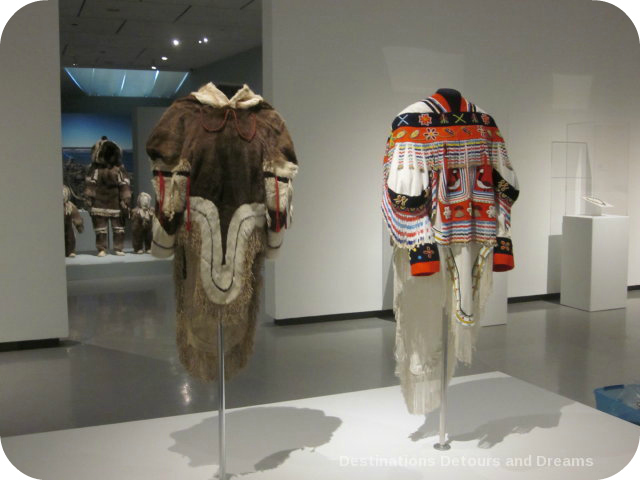
A room at the back of the exhibit was dedicated to Inuit printmaking. In addition to print artwork itself, there was information about the process and tools on display. Unlike other types of Inuit art, printmaking does not have historical roots. James Houston introduced the technique to the Inuit. The Inuit took the technique and made it uniquely their own, often carving images into stone and transferring that image onto paper. Throughout the entire exhibit, I was struck by how the Inuit had adapted techniques to use available material and used new methods to tell ancient stories.
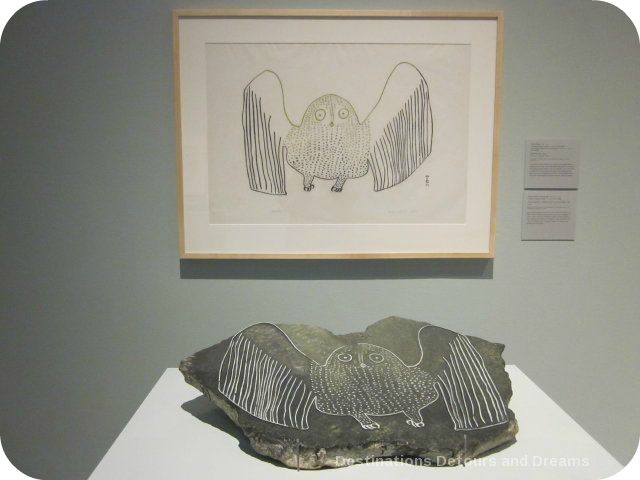
The art in the exhibit came from Nunavut, a territory formed in 1999 when Canada redrew its map and divided the Northwest Territories into two entities. It was the outcome of the largest aboriginal land claim in Canada. Inuit people make up 83% of the population of Nunavut.
After Nunavut was formed, collections of art were assessed. Ownership of pieces from the eastern Arctic was transferred to Nunavut. Many pieces remained in storage in Yellowknife, Northwest Territories. In February 2016, the Nunavut government reached an agreement with the Winnipeg Art Gallery to loan them 7,500 pieces. The WAG already had its own collection of Inuit art, having starting to collect it in the 1950s. Today, the WAG holds in trust the world’s largest collection of Inuit art and has plans for the construction of a new Inuit art centre.
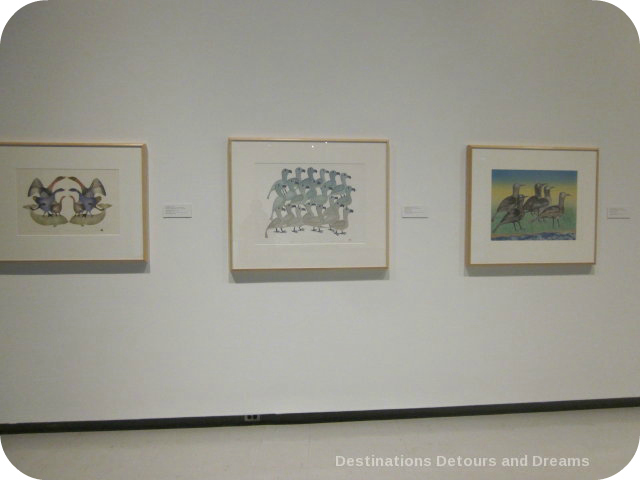
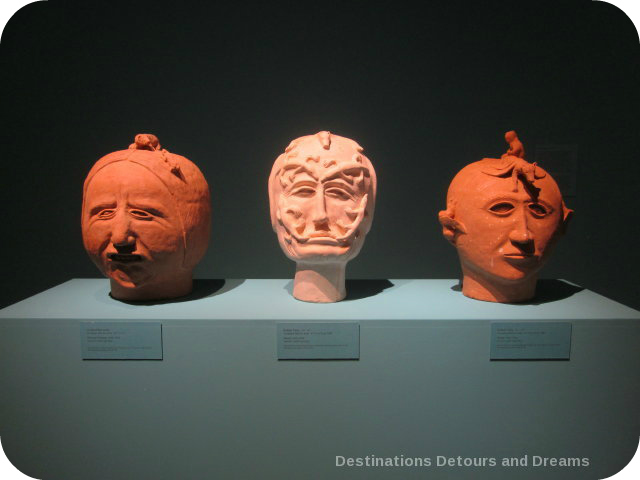
I visited the Our Land exhibit again on my own, viewing the exhibits with a little more insight. Our Land: Contemporary Art from the Arctic is no longer running at the WAG, but there are other pieces of Inuit art on display in the WAG’s permanent exhibits. Their gift shop carries pieces of Inuit art and has a beautiful showcase of sculptures.
Destinations Detours and Dreams monthly e-newsletter contains behind the scenes information, sneak peeks ahead, travel story recaps and more. SIGN UP HERE

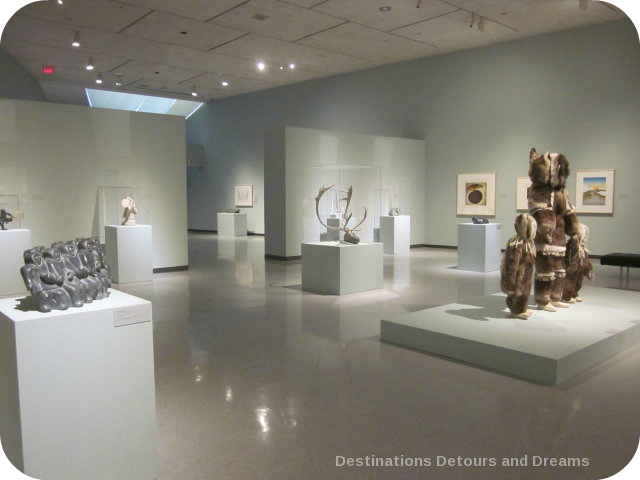
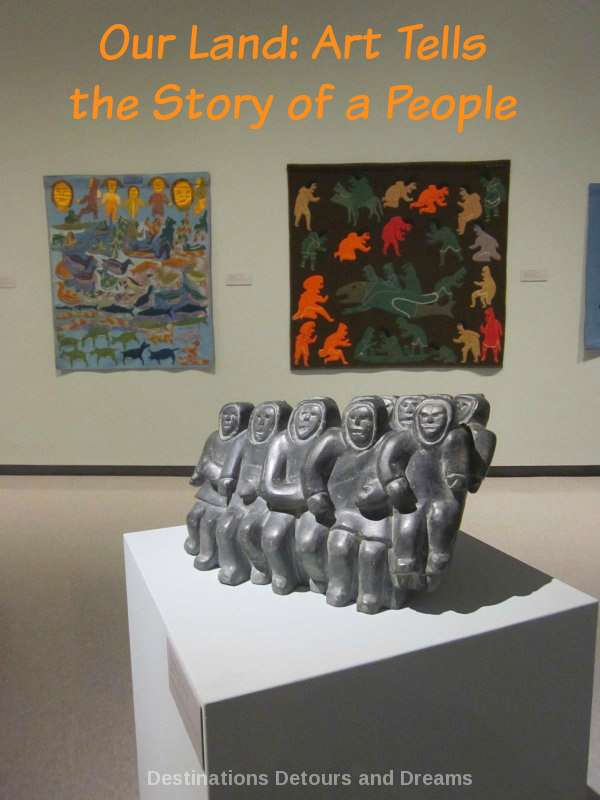
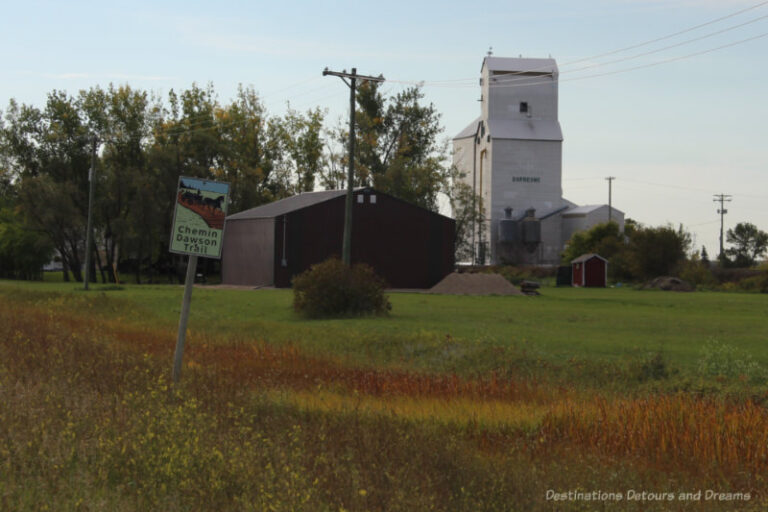
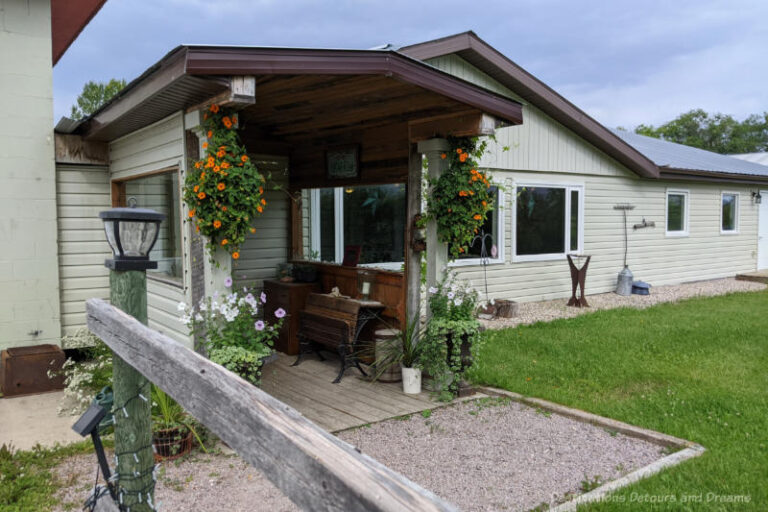
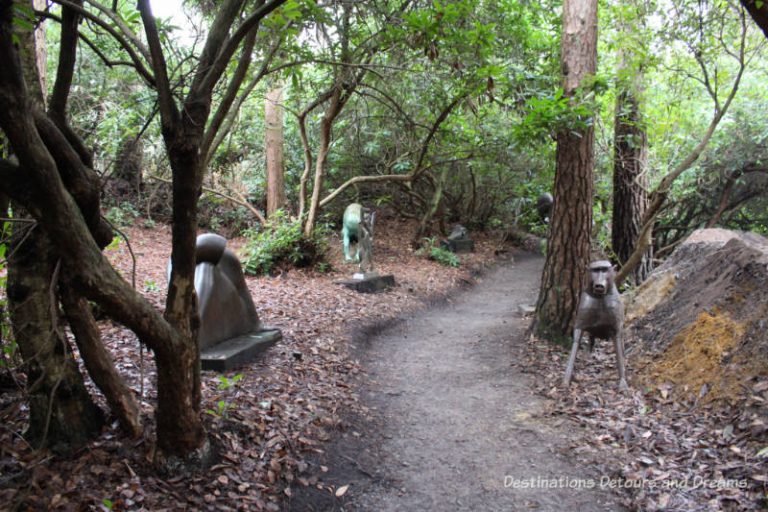
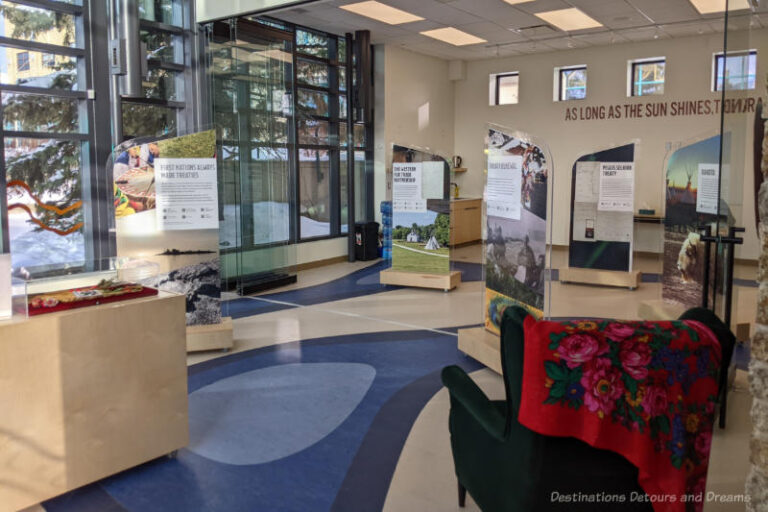
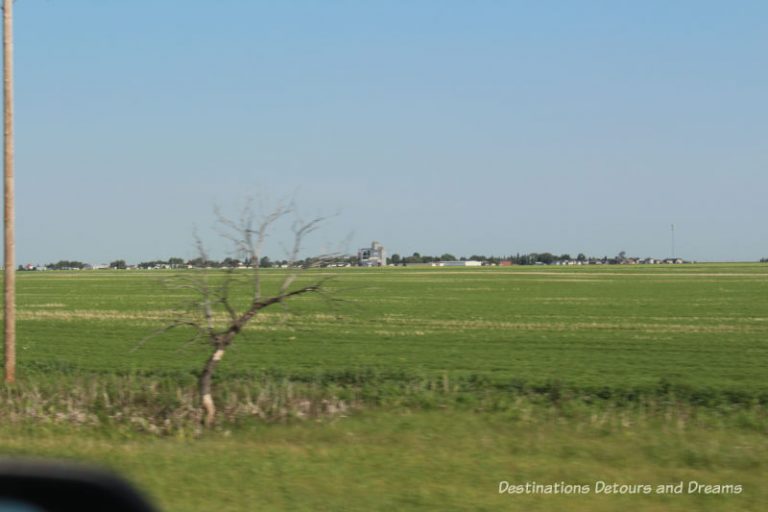

I saw an Innuit art exhibit over the summer at the musee national in Quebec. It was pretty impressive but it wasn’t as diverse as the one in Winnipeg.
Ken, I have not been to the Musee National in Quebec, but it is known to have a nice collection of Inuit art. I will have to visit it some day.
So very nice to revisit this with you, Donna. Together with Randy Turner’s piece in the Winnipeg Free Press this weekend, my appreciation for Inuit stories depicted through their art continues to grow. Thank you.
Thanks Linda. Randy Turner’s piece was good. It was interesting to read it knowing I was going to publish this post the next day.
That’s fascinating – art becomes so much more meaningful once you understand the cultural context.
Karen, agreed.
HI Donna. I have seen the Inuit art exhibit at the WAG and love it. Thx for shearing it with the world.
Doreen, now that Our Land has been extended into April, I may have chance to visit again,
Another piece that takes us straight to the destination, the Inuit art exhibit in WAG. When we went to the Arctic Circle from Dawson City, we almost reached Nunavut but it was summer and the river wasn’t frozen!
Carol, a visit to the Arctic Circle had to be interesting – I’ve never been.
Interesting that the Inuit have no word for art in their language. The exhibition at the Winnipeg art gallery sounds well worth it. I’ve been to a few small collections of native american artwork and culture, but would love to explore larger collections.
Jeri, it is interesting there is no word for art when they are obviously creative.
Having Fred as your tour guide probably gave you the best insight into Inuit Art. I too, immediately think of dark grey soapstone carvings when I think about this kind of art, but had no idea as to the history or stories behind how the art became popular.
Janice, I am only starting to learn the history and it is interesting.
I loved learning a bit about Inuit Art in this post, Donna and can imagine how terrific it was to have personal tour by someone as knowledgeable as Fred to pique your interest. I loved looking at the carvings and prints but usually my biggest fascination is with the clothes the people wear and the adornments. The embroidery in the clothes you have pictured is beautiful. Anita
Anita, the clothing is indeed beautiful.
Very interesting to see how the Inuit have used art, and particularly new art forms, in such unique ways to express their culture.
Rachel, it is interesting to see how they’ve incorporated new techniques and material with the old.
I love when you get those behind the scenes stories from randomly meeting a person. What a delight!
RoseMary, it was a delight. You can’t plan those kind of things!
Hi Donna, how interestimg. What an education on Intuit art. It makes it so much more interesting knowing some of the background and history behind it. Thanks for sharing. 🙂
Susan, knowing the background and history does make it more interesting. There is quite a bit of written information on the walls about the history and culture as well.
Fascinating tour, I would have enjoyed being shown around the place with someone knowledgeable and passionate about Inuit art- I do love the contemporary vibe of the art pieces.
Noel, there is very much a contemporary vibe to the art.
So glad you enjoyed the exhibit Donna. It is one of my all time favorites. Last week I spent an evening giving tours of Our Land to people from all over the world who were in Winnipeg for the Arctic Net conference. It was neat to see people from other countries learn about and take such an interest in art that it is truly a Canadian treasure.
MaryLou, that would have been neat and interesting to see their reactions.
Donna Jake,
Thank you for sharing the story of a people and introduce us to your land.The information shared by Fred indeed has helped us connect well with the exhibition.
Thank you Sushmita.
Great post, Donna! Glad to hear you enjoyed the show and the fabulous art of the Inuit. We love Inuit art, but then, we’ve collected it for years! We haven’t been up to see this show yet, but may have to see if we can still fit it into the schedule.
Thank you for your kind remarks. Fred Ford
Fred, thanks for your explanations and insights. They led to a greater appreciation of the art works.
Fred would pay his artists with alcohol in Baker Lake.